After Russia’s illegal full-scale invasion of Ukraine in February 2022, Western partners imposed unprecedented financial sanctions and export controls against Russia. These measures aim to achieve three objectives:
1. Significantly reduce Russia’s revenues from commodities exports;
2. Cripple Russia’s military capability and ability to pursue its war;
3. Impose significant pain on the Russian economy.
The Atlantic Council’s Russia Sanctions Database tracks the restrictive economic measures Western allies have placed on Russia and evaluates whether these measures are successful in achieving the stated objectives and bringing lasting peace to Ukraine. The Database is now static and was last updated in November 2024. You can access the final version here.
Key takeaways:
- As a result of sanctions, the United States maintains leverage over Russia’s oil revenues from China and India. Meanwhile, the European Union (EU) and its member states control Russia’s energy exports to Europe, the majority of Russia’s blocked assets, and Russia’s ability to reconnect to the Society for Worldwide Interbank Financial Telecommunications (SWIFT).
- 2025 is predicted to be a difficult fiscal year for Russia, and may be the last year it can rely on the National Welfare Fund to cover its fiscal deficit. This explains why Russian President Vladimir Putin is simultaneously trying to prolong negotiations and seek sanctions relief.
- Lifting sanctions on Russia could impact US energy and financial dominance. Russia’s liquified natural gas (LNG) projects would directly compete with US LNG exports. Russia has also openly advocated for dedollarization within BRICS.
Sanctions have emerged as a central element of negotiations between the United States and Russia over the ceasefire in Ukraine. April 20 has been reported as a date by which US President Donald Trump intends to reach a ceasefire deal with Russia, although Russia is attempting to delay progress. However, excluding Ukraine and the EU from the negotiations could undermine Washington’s sanctions strategy—whether this involves lifting or intensifying them, both of which have been suggested by the Trump administration at different times. Considering the centrality of sanctions in the Ukraine negotiations, this edition of the Russia Sanctions Database:
- Explains who controls which economic leverage over Russia
- Assesses Russia’s negotiating power based on the performance of its economy
- Analyzes the implications of lifting sanctions on Russia for US global dominance in energy and finance
What type of economic influence do Western powers exert on Russia and who controls it?
The United States maintains significant economic leverage over Russia as a result of sanctions and the traditional strength of the dollar in the global economy. However, the EU, as a historical trading partner with Russia, controls the levers causing Russia the most economic pain. The United States cannot deliver the economic relief Russia is seeking on its own and will need to work with its European partners on a negotiated settlement.
The United States maintains leverage over Russia’s oil revenues from China and India. The main economic leverage of the United States over Moscow is Washington’s ability to prevent Russian oil exports to China and India with secondary sanctions. Oil revenue is the lifeline of the Russian economy, and the rerouting of oil shipments from Europe to China and India as a result of the price cap and other restrictive measures kept the Russian economy afloat since 2022. This changed when the United States created the Russia secondary sanctions authority at the end of 2023 and expanded the definition of Russia’s military-industrial complex in 2024 to capture more entities and activity under secondary sanctions. Oil payments from China were suspended or delayed over Chinese banks’ concerns about secondary sanctions. On January 10 of this year, the Treasury Department designated two of Russia’s most significant oil producers and exporters—Gazprom Neft and Surgutneftegas—which resulted in Chinese and Indian refineries canceling their orders of Russian oil and looking for alternative suppliers in the Middle East. Further, on March 12, General License (GL) 8L, which allowed for energy transactions with sanctioned Russian entities pursuant to the price cap, expired. Companies that continue to transact with sanctioned Russian energy entities are exposing themselves to the threat of US sanctions. Thus, the main lever of the United States over Russia right now is its ability to influence China and India’s decisions to continue or discontinue importing Russian oil.
The EU is home to SWIFT. The EU and its member states control the outcome of one of Russia’s primary demands within the Black Sea ceasefire negotiations—reconnection to SWIFT. Certain Russian financial institutions were “de-SWIFTed” when the EU sanctioned them in 2022. Russia is demanding reconnection with SWIFT as a precondition for a ceasefire in the Black Sea. But if the United States unilaterally decides to lift its sanctions on Russia as part of the negotiated deal over the war in Ukraine, Russia will still be subject to European sanctions and restrictions. The EU has indicated its sanctions on Russia will remain in place until the “unconditional withdrawal” of Russian troops from Ukraine. In fact, Europe is considering additional sanctions on Russia according to a joint statement by the foreign ministers of Spain, Germany, France, Italy, Britain, and Poland. Because SWIFT is based in Belgium and must comply with EU law and sanctions, the EU is the primary arbiter of Russia’s reconnection to SWIFT.
The EU and its member states control Russia’s energy exports to Europe. The United States no longer imports Russian oil, and nor does the United Kingdom. Prior to Russia’s invasion of Ukraine in 2022, Russia was the largest source of EU imports of oil and gas. Russia rerouted its oil exports to China and India using a shadow fleet in response to the Group of Seven price cap and sanctions, which allowed the Russian economy to stay afloat. In the case of gas, Russia decided to stop the flows of pipeline gas to stymie European support for Ukraine, which did not work due to warm winters and US LNG. Russia ended up losing access to the lucrative and geographically proximate European market for both oil and gas exports. The price cap has also negatively affected Russia’s revenue from oil sales. The EU will decide if and when Russia regains access to the European energy market, and if the price cap and other restrictive economic measures the Europeans impose are lifted.
The EU and its member states control the majority of Russia’s blocked assets. Out of the estimated $280-300 billion worth of blocked Russian Central Bank and National Welfare Fund assets, at least $5 billion sits in the United States. Euroclear, a Belgium-based Financial Market Infrastructure service provider, holds approximately $210 billion, making the EU the most relevant decision-maker on the fate of the assets.
Western powers have more diffuse control over measures such as exports of sensitive technology, but the measures listed above are clear chokepoints. Ensuring that the United States and EU move together in sanctions removal or escalation against Russia will be critical in shaping effective outcomes that ensure stability and peace for Ukraine.
Assessing Russia’s negotiating position based on the performance of its economy
Putin is trying to prolong negotiations while pushing Washington to remove sanctions. Russia’s willingness to negotiate reflects the state of Russia’s economy and challenges in financing its costly war. In the weeks leading up to the thirty-day energy ceasefire—which has been in place since March 25 and intended to stop strikes on both parties’ energy infrastructure—Russia’s industry and trade ministry asked Russian companies to identify which sanctions Moscow should seek to have lifted during peace talks. Participants in the inquiry—many of whom work as major exporters, consultants, lawyers, economists, and advisors—identified sanctions on energy and payment systems to be the most painful and the first they would like to see come down. Gazprom, a Russian energy giant, has been hit the hardest by sanctions. For the first time since 1999, Gazprom recorded a net loss of $7 billion in 2023 and a net loss of $12.89 billion in 2024. Sanctions on Russian oil have squeezed its lucrative oil trade, with reports that Russian oil cargoes are stuck at sea as companies struggle to find buyers. In February 2025, Russia’s export volumes of seaborne crude oil fell by 9 percent on a month-over-month basis, while export revenues decreased by 13 percent.
Sanctions on Russia’s financial sector limited its ability to access international debt markets. To cover deficit spending, Russia has instead turned to domestic bond issuance as well as its National Welfare Fund (NWF), but three years into the war its liquid assets have shrunk by 60 percent. 2025 is predicted to be a difficult fiscal year for Russia and might be the last year it can rely on the NWF to cover its fiscal deficit. Russia’s corporate debt has surged by nearly 70 percent since 2022, with a large portion of this debt consisting of preferential loans that Russian banks made to its defense contractors. As Russia’s economy grows more precarious, sanctions relief for its financial sector could give the country some breathing room to fight the economic pressures created by sanctions. Relief could also mitigate inflation and economic overheating that prompted its central bank to increase interest rates to a high of 21 percent.
The combination of these factors explains why Russia demands that lifting sanctions be a precondition for any ceasefire deal. However, given Russia’s track record of violating ceasefire agreements, prematurely lifting sanctions could facilitate the recovery of the Russian economy while failing to achieve a meaningful ceasefire in Ukraine.
Implications of lifting sanctions on Russia for the US global dominance in energy and finance
Lifting sanctions on Russia will have implications not just for Ukraine, but also the United States’ global dominance in energy and finance. Policymakers will need to carefully consider options to lift sanctions against Russia.
Since 2022, the United States has played a crucial role in filling the energy gap left by Russia, particularly by becoming the world’s largest exporter of LNG. Over 80 percent of US LNG exports are now sent to Europe. Although 17 percent of Europe’s LNG imports still come from Russia, the EU has set a target to eliminate Russian oil and gas imports by 2027. A return to pre-war energy supplies is unlikely, even if sanctions are eventually eased. Consequently, the EU is increasingly turning to the United States for LNG to meet its energy needs, though continuing to do so is contingent on the United States’s ability to meet demand.
Under the Trump administration, the United States has worked to expand its LNG production by issuing additional project permits. However, some hesitation exists within the industry due to unpredictable capital costs and a poorer economic outlook, including the risk of rising material costs caused by the 25 to 50 percent tariffs on steel, which are vital for constructing LNG facilities. Moreover, the US natural gas market is heavily dependent on associated gas production from oil wells. Should sanctions on Russian energy be lifted, the potential increase in global oil supply could drive down oil prices, which might slow US oil drilling and reduce natural gas production.
Before the war, Russia had ambitious plans to increase its LNG exports to 100 million tons per year by 2030, up from just under 35 million tons in 2024. Despite the sanctions, Russia has reaffirmed its target to reach 100 million tons per year by 2035. Should sanctions be eased, Russia’s energy exports could experience a significant boost, especially if stalled projects like the Arctic LNG 2 and smaller LNG facilities such as Portovaya and Vysotsk resume. Together, these projects could add between 8.8 million and 16.4 million tons of LNG per year to global markets.
While the United States remains a dominant force in the LNG export market, Russia’s ambition to reclaim its position as a key global energy player means that it could once again emerge as a significant competitor to the United States. Sanctions relief, especially, could accelerate the development of Russia’s energy projects.
In addition to threatening ambitions for US global energy dominance, lifting sanctions on Russia could reduce US financial dominance, erode the power of US financial sanctions, and limit US visibility of transactions and potential sanctions evasion. Since 2014, when Russia was first sanctioned due to its invasion of Crimea, the Central Bank of the Russian Federation (CBR) has developed a Russian version of SWIFT called Sistema Peredachi Finansovykh Soobcheniy (SPFS). It also created the Mir National Payment System to avoid relying on American companies such as Mastercard, Visa, and American Express. The international reach of SPFS has expanded significantly since 2022, when ten major Russian banks were banned from SWIFT. As of 2024, SPFS included 160 foreign banks. Russian banks have also issued co-badged Mir and UnionPay cards, allowing Russians to take advantage of UnionPay’s substantial presence in 180 countries.
Russia is also the primary driver and advocate of the dedollarization agenda within BRICS. Moscow leverages BRICS as a platform to advocate adopting alternative currencies for trade and reserves, in direct conflict with the United States’ interest in maintaining dollar dominance. In fact, Trump has threatened to impose 100 percent tariffs on the BRICS members if they continue efforts to create a BRICS currency or “back any other currency to replace the mighty US dollar.”
Sanctions on SPFS and Mir payment systems thwart Russia’s ability to expand the reach of its alternative payment systems and to connect SPFS with China’s payment system, the Cross-Border Interbank Payment System. Mir has recently connected with Iran’s Shetab interbank network, which will allow for the use of respective bank cards in both jurisdictions. The CBR seeks to increase the number of countries using Mir from eleven to twenty-five by 2025 and has been in negotiations with several countries including China, Egypt, India, Indonesia, and Thailand. However, warnings and sanctions imposed by the United States in September 2022 caused many banks in Mir’s eleven operating countries to abandon the use of the payment system. Like Mir, sanctions have curtailed efforts to expand SPFS through deterrence and by limiting the domestic use of SPFS. In November 2024, the Office of Foreign Assets Control issued an alert warning that any foreign financial institutions and jurisdictions that join or already have joined SPFS may face sanctions pursuant to Executive Order 14024.
If US financial sanctions on Russia are lifted, Russia will almost certainly continue to expand the reach of its alternative payment systems and advocate for the adoption of alternative currencies. China and other BRICS members are likely to work with Russia on payment system integration if they are no longer facing the threat of secondary sanctions. Developing and integrating payment systems is a highly technical and complex process, and the use of non-Western currencies will also pose an additional challenge. However, Russia is likely to prioritize its work on financial payments if the United States lifts sanctions.
Conclusion
Western economic pressure on Russia has created the conditions that are bringing Putin to the negotiation table. As the US delegation continues to negotiate with Russian counterparts over a ceasefire deal and, ultimately, peace for Ukraine, it is crucial to remember that Russia is a US competitor in global energy dominance and has led the dedollarization agenda within BRICS. Sanctions relief for Russia carries consequences not only for Ukraine and Europe, but also for the United States’ goals to dominate in the global energy and financial sectors. It is equally important to have a clear understanding of the economic levers European allies control over Russia and ensure that the EU and Ukraine are actively involved in negotiations to shape effective outcomes.
Finally, the EU should uphold sanctions against Russia collectively, rather than shifting toward autonomous sanctions regimes. The EU needs to unanimously renew sanctions against Russia every six months. This year, the renewal of sectoral sanctions is due for January and July, while listings are due for renewal in March and September. Hungary disrupted the renewal process both in January and March, agreeing to it only after securing certain concessions from the EU. Recognizing that not being able to renew sanctions against Russia is now a possibility, EU officials and member states have started working on alternative solutions, including tariffing Russian imports and implementing autonomous sanctions. A fragmented EU sanctions approach would diminish the bloc’s collective economic leverage over Russia and risk exposing divisions within the bloc that Moscow could take advantage of.
Authors: Kimberly Donovan, Maia Nikoladze, Lize de Kruijf, and Nazima Tursun
Past editions
Related content
Join our list
Sign up for other events and analysis from the GeoEconomics Center.
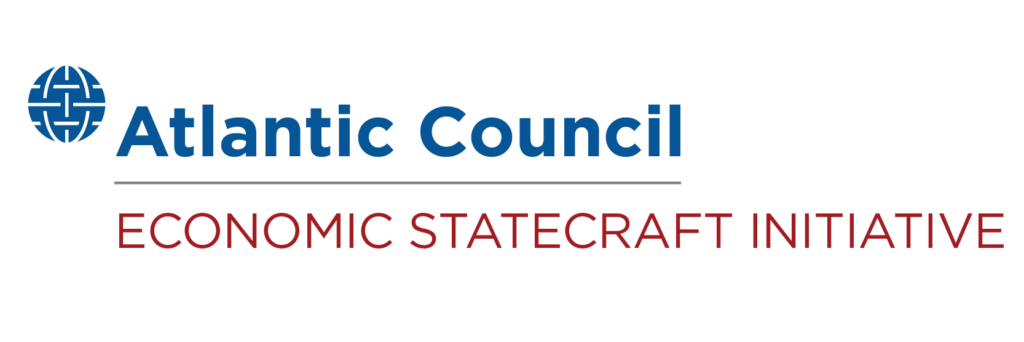
Economic Statecraft Initiative
Housed within the GeoEconomics Center, the Economic Statecraft Initiative (ESI) publishes leading-edge research and analysis on sanctions and the use of economic power to achieve foreign policy objectives and protect national security interests.

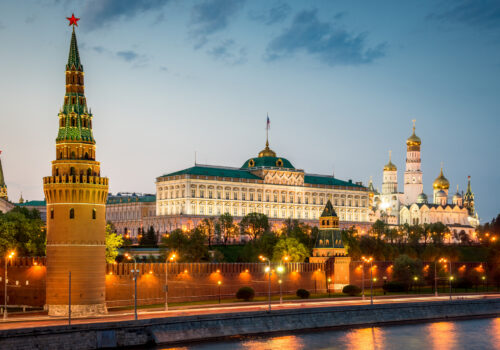
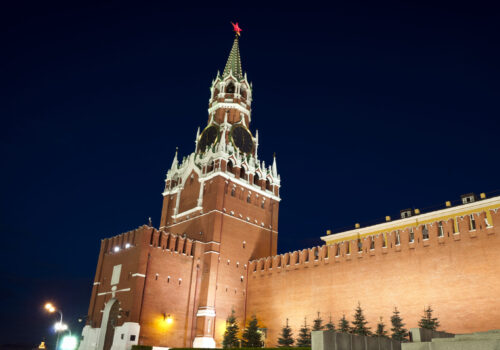
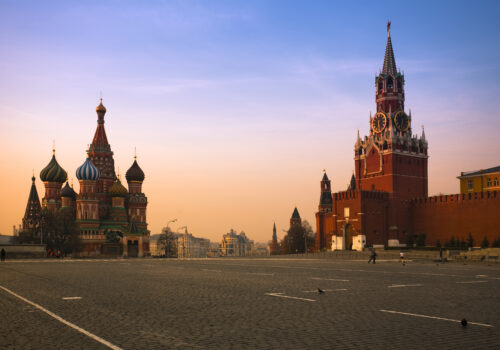
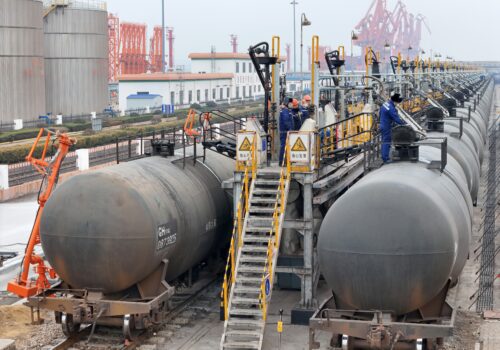

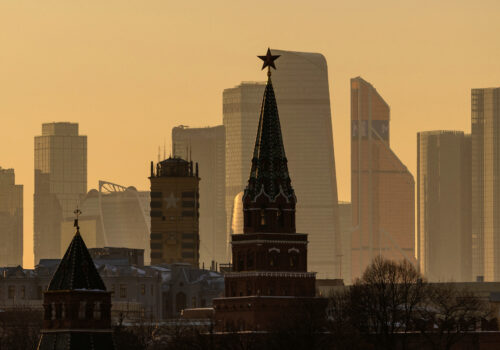
Follow us on social media